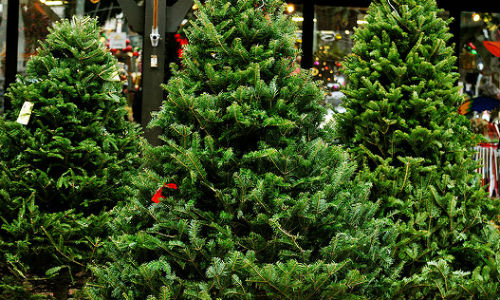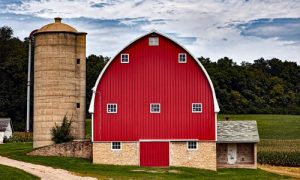With the holiday season around the corner, the economic impact of Christmas trees is a timely business story. The industry has evolved profoundly over the last 100 years. Originally cut from forests, the majority of Christmas trees are now grown on farms and considered as much of a crop as wheat or soybeans.
Where the trees grow—and go
Over 174,000 acres of U.S. land is used in Christmas tree production each year, according to the Department of Agriculture. While the trees are grown in 45 states, the National Christmas Tree Association says the top tree-producing states are Oregon (4.9 million), North Carolina (2.8 million), Michigan (1.2 million), Pennsylvania (812,000) and Wisconsin (619,000). Canada also exports a sizeable number of Christmas trees to the U.S. The most common species are Balsam fir, Douglas fir, Fraser fir, noble fir, Scotch pine, Virginia pine and white pine.
According to the Pacific Northwest Christmas Tree Association, approximately 92 percent of all Christmas Trees grown in the Pacific Northwest are shipped to locations both in and out of the United States. Some growers use helicopters to pick up fresh-cut trees and deliver them to loading areas; refrigerated vans are also used to keep trees cool. The largest overseas markets include Japan, China, Hong Kong, the Philippines and Mexico.
The battle between real vs. artificial
A majority of Americans still prefer their Christmas trees to be real, rather than artificial. In 2014, approximately 26.3 million real Christmas trees were sold in the U.S., down from 30.8 million in 2011. That compares with 2014 sales of 13.9 artificial trees, 80 percent of which were imported from China, according to the U.S. Census Bureau. With their average price of $81, the fake trees raked in more cash: From 2007 to 2013, the artificial tree industry garnered $1.19 billion in sales, opposed to the $1.16 billion amassed by real trees.
Year-round and seasonal jobs
There are close to 15,000 farms growing Christmas trees in the United States. Over 100,000 people are either fully or partially employed in the industry, according to the National Christmas Tree Association. While harvest is the busiest time of year, growing the trees is a year-round job. It takes an average of seven years to grow a 6 – 7 foot tree. The selling of trees is also big seasonal business. According to the Agricultural Marketing Resource Center at Iowa State University, here’s where people shopped for their trees in 2012: cut-your-own-tree farms (24 percent), chain stores (24 percent), retail lots (15 percent), nonprofit groups (15 percent) and nursery/garden centers (11 percent).
Reporter’s Takeaway
• Transporting trees is a story in itself. Talk to Christmas tree purveyors in your area to see where their merchandise originated, and how it got to its final destination. Consumers want fresh trees, so ask what businesses are doing to keep their crops in top shape.
• There’s a lot of employment in the Christmas tree industry, though some is seasonal and not all of it pays well. Look into how lot attendants are compensated; some work solely for tips. Local and state Christmas tree associations list farms where you can head to find year-round numbers as well as the big job increases during harvest season. You can also learn where the crops are being shipped domestically and internationally.
• Real trees still outsell artificial trees—for now. Report on a story uncovering if most of the Christmas trees in your local state or community are real or artificial. Has there been a steady decline in business for real trees over the years? Is it a downward trend? Chain stores, which sell both artificial and live trees, can be a good source of information











